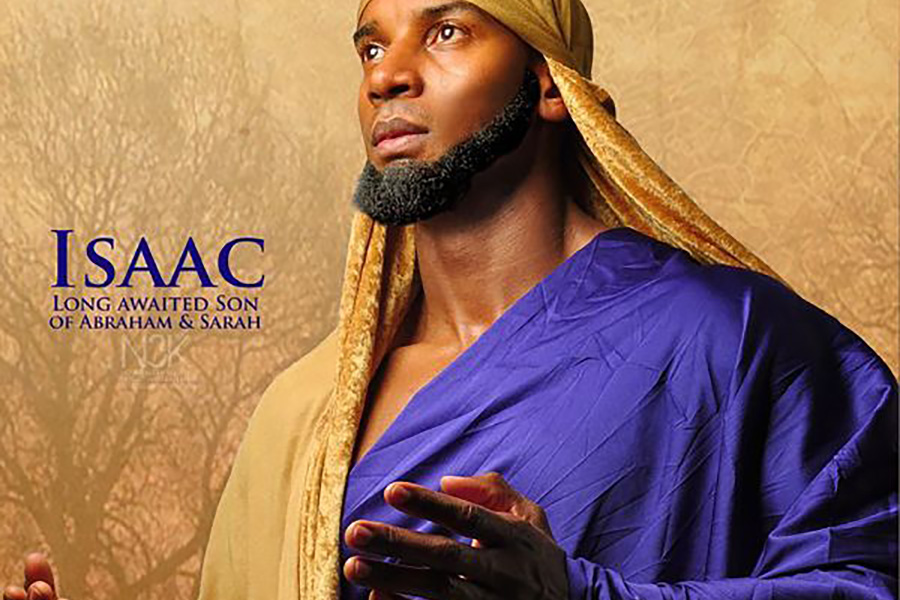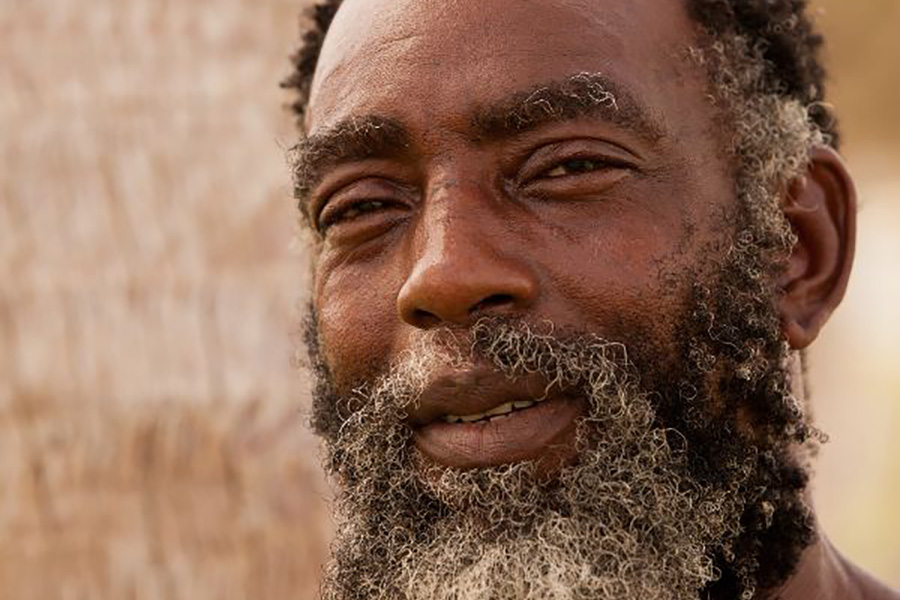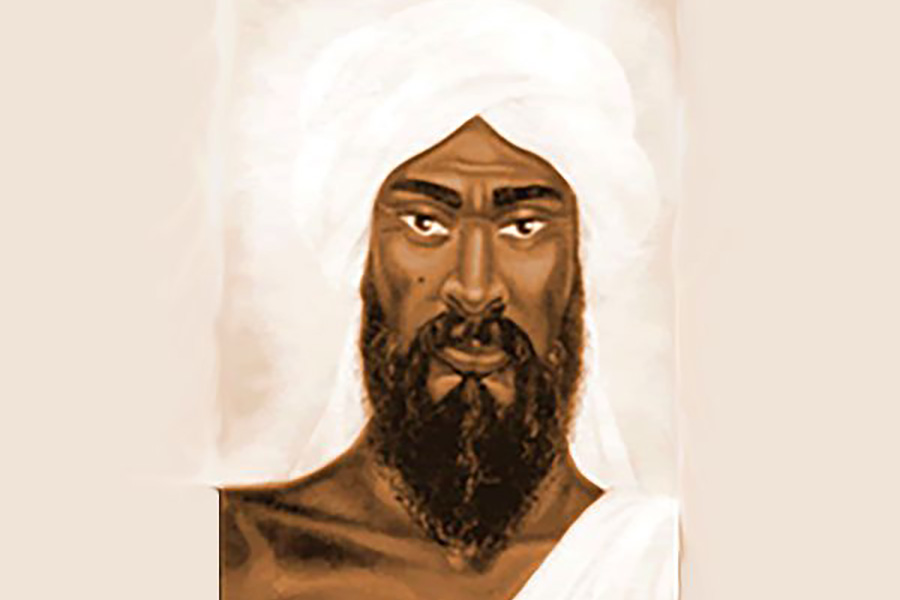The word yatsakhaq (𐤉𐤑𐤇𐤒) or “Isaac” is the name of 𐤀𐤁𐤓𐤌 (Abaram) aka 𐤀𐤁𐤓𐤄𐤌 (Abaraham)’s second-born 𐤁𐤍 (ban) and promised child by 𐤔𐤓𐤄 (Sharah). He is the younger 𐤀𐤇 (akh) of 𐤉𐤔𐤌𐤏𐤀𐤋 (Yashamaāal). However, most importantly he is the 𐤀𐤁 (ab) of both 𐤉𐤏𐤒𐤁 (Yaāqab) aka 𐤉𐤔𐤓𐤀𐤋 (Yasharaal) and 𐤏𐤔𐤅 (Āshau) aka 𐤀𐤃𐤅𐤌 (Adauam). His 𐤀𐤔𐤄 (ashah) was his second cousin and her name was 𐤓𐤁𐤒𐤄 (Rabaqah).
The Paleo-Hebrew language or the original language of the Ābarayam is one spoken with an emphasis on the rauakh (breath, wind, spirit). With the language of the Ābarayam, each letter has a meaning and a number associated with it that adds meaning to each word they’re used with. Below you will be able to learn more about the letter in Ancient Hebrew, Yiddish Hebrew, Greek, and much more.
Letter Meanings
| Letter | Meaning |
|---|---|
| 𐤉 (y) – ya | arm, hand, work, thrust, deed, make, throw, worship Prefix: he/she, turns a word third person |
| 𐤑 (ts) – tsa | man on his side, snare, correct trail, need, desire, hunt, wait |
| 𐤇 (kh) – kha | tent wall, fence, separation, divide, abdomen, belly |
| 𐤒 (q) – qa | divide, sun on horizon, behind, gather, condense, go around, circle |
| Ābarayat Number | |
| Hebrew Gematria | |
| English Gematria | |
| Simple Gematria |
Based on the meaning of the letters the word could be defined as:
- “work to correct trail of separation (set-apart) to gather”
- “creation of desire to divide a sun on horizon”
- “worship of desire for separation (set-apart) from gather(ing)”
- Combines Ya and Tsakhaq
- He laugh
- He mock
- He play
- Combines Yah and Tsakhaq
Definitions for 𐤉𐤑𐤇𐤒 / yatsakhaq
| Language | Word | Transliteration | Pronunciation | Definition |
|---|---|---|---|---|
| Ābarayat | 𐤉𐤑𐤇𐤒 | yatsakhaq | yatsa-khak | “he laughs”, son of Abaraham and Sharah |
| English | Isaac | Isaac | ahy-zuhk | a son of Abraham and Sarah, and father of Jacob. Genesis 21:1–4. |
| Hebrew | יִצְחָק | Yitschaq | yits-khawk’ | “he laughs”, son of Abraham and Sarah |
| Arabic | إسحاق | ‘iishaq | ees-hawk | Isaac |
| Greek | Ἰσαάκ | Isaak | ee-sah-ak’ | Isaac, the son of Abraham |
The Birth and The Promise
𐤉𐤑𐤇𐤒 (Yatsakhaq) name means “he laugh” or “he mocks”, reflecting the laughter, in disbelief, of 𐤔𐤓𐤄 (Sharah), when told by 𐤉𐤄𐤅𐤄 (Yahauah) / 𐤉𐤄𐤉𐤄 (Yahayah) that they would have a child. He is the only patriarch whose name was not changed, and the only one who did not move out of 𐤊𐤍𐤏𐤍 (Kanaān). According to the narrative, he died at the age of 180 years old, the longest-lived of the three patriarchs.
On the eighth day from his birth, he was circumcised, as was necessary for all males of 𐤀𐤁𐤓𐤄𐤌 (Abaraham)’s household, in order to be in compliance with 𐤉𐤄𐤅𐤄 (Yahauah) / 𐤉𐤄𐤉𐤄 (Yahayah)’s covenant. After he had been weaned, 𐤔𐤓𐤄 (Sharah) saw 𐤉𐤔𐤌𐤏𐤀𐤋 (Yashamaāal) 𐤑𐤇𐤒 (tsakhaq) or mocking and urged 𐤀𐤁𐤓𐤄𐤌 (Abaraham) to cast out 𐤄𐤂𐤓 (Hagar) the bondservant and her 𐤁𐤍 (ban), so that Yatsakhaq would be 𐤀𐤁𐤓𐤄𐤌 (Abaraham)’s sole heir. 𐤀𐤁𐤓𐤄𐤌 (Abaraham) was hesitant, but at 𐤀𐤋𐤄𐤉𐤌 (alahayam)’s order he listened to his 𐤀𐤔𐤄 (ashah), 𐤔𐤓𐤄 (Sharah)’s, request.
The Sacrificial Ram
During his youth, his 𐤀𐤁 (ab), 𐤀𐤁𐤓𐤄𐤌 (Abaraham) took him to Mount 𐤌𐤅𐤓𐤉𐤄 (Mauarayah). At 𐤀𐤋𐤄𐤉𐤌 (alahayam)’s command, 𐤀𐤁𐤓𐤄𐤌 (Abaraham) was to build a sacrificial altar and sacrifice the young boy upon it. After 𐤀𐤁𐤓𐤄𐤌 (Abaraham) had bound his 𐤁𐤍 (ban) to the altar and drawn his knife to kill the young boy, at the last moment a 𐤌𐤋𐤀𐤊 (malaak) of 𐤉𐤄𐤅𐤄 (Yahauah) / 𐤉𐤄𐤉𐤄 (Yahayah) prevented 𐤀𐤁𐤓𐤄𐤌 (Abaraham) from proceeding. Instead, he was directed to sacrifice a nearby ram that was stuck in thickets.
The Marriage and the Two Nations
Before the young man was 40, his 𐤀𐤁 (ab) sent 𐤀𐤋𐤉𐤏𐤆𐤓 (Alayaāzar), his steward, into 𐤀𐤓𐤌 𐤍𐤄𐤓𐤉𐤌 (Aram Naharayam) aka Mesopotamia to find a 𐤀𐤔𐤄 (ashah) for the young man, from 𐤀𐤁𐤓𐤄𐤌 (Abaraham) nephew 𐤁𐤕𐤅𐤀𐤋 (Batauaal)’s family. 𐤀𐤋𐤉𐤏𐤆𐤓 (Alayaāzar) chose the 𐤀𐤓𐤌𐤉 (Aramay), 𐤓𐤁𐤒𐤄 (Rabaqah), for his master’s 𐤁𐤍 (ban). After many years of marriage to him, 𐤓𐤁𐤒𐤄 (Rabaqah) had still not given birth to a child and was believed to be barren.
He prayed for her and she conceived. 𐤓𐤁𐤒𐤄 (Rabaqah) gave birth to twin boys, 𐤏𐤔𐤅 (Āshau) and 𐤉𐤏𐤒𐤁 (Yaāqab). He was 60 years old when his two 𐤁𐤍𐤉𐤌 (banayam) were born. He favored 𐤏𐤔𐤅 (Āshau), and 𐤓𐤁𐤒𐤄 (Rabaqah) favored 𐤉𐤏𐤒𐤁 (Yaāqab). The narratives about him do not mention him having concubines.
He moved to 𐤁𐤀𐤓 𐤋𐤇𐤉 𐤓𐤀𐤉 (Baar Lakhay Raay) after his 𐤀𐤁 (ab), 𐤀𐤁𐤓𐤄𐤌 (Abaraham) died. When the land experienced famine, he moved to the 𐤐𐤋𐤔𐤕𐤉 (Palashatay) land of 𐤂𐤓𐤓 (Garar) where his 𐤀𐤁 (ab) once lived. This land was still under the control of King 𐤀𐤁𐤉𐤌𐤋𐤊 (Abayamalak) as it was in the days of 𐤀𐤁𐤓𐤄𐤌 (Abaraham). Like his father, he also deceived 𐤀𐤁𐤉𐤌𐤋𐤊 (Abayamalak) about his 𐤀𐤔𐤄 (ashah) and also got into the well business.
He went back to all of the wells that his 𐤀𐤁 (ab) dug and saw that they were all stopped up with earth. The 𐤐𐤋𐤔𐤕𐤉𐤌 (Palashatayam) did this after 𐤀𐤁𐤓𐤄𐤌 (Abaraham) died. So, he unearthed them and began to dig for more wells all the way to 𐤁𐤀𐤓 𐤔𐤁𐤏 (Baar Shabaā), where he made a pact with 𐤀𐤁𐤉𐤌𐤋𐤊 (Abayamalak), just like in the day of his 𐤀𐤁 (ab).
He grew old and became blind. He called his 𐤁𐤍 (ban), 𐤏𐤔𐤅 (Āshau), and directed him to procure some venison for him, in order to receive his blessing. While 𐤏𐤔𐤅 (Āshau) was hunting, 𐤉𐤏𐤒𐤁 (Yaāqab), after listening to his 𐤀𐤌 (am)’s advice, deceived his blind 𐤀𐤁 (ab) by misrepresenting himself as 𐤏𐤔𐤅 (Āshau) and thereby obtained his 𐤀𐤁 (ab)’s blessing, such that 𐤉𐤏𐤒𐤁 (Yaāqab) became the primary heir and 𐤏𐤔𐤅 (Āshau) was left in an inferior position.
Thereafter, he sent his 𐤁𐤍 (ban), 𐤉𐤏𐤒𐤁 (Yaāqab), into 𐤀𐤓𐤌 𐤍𐤄𐤓𐤉𐤌 (Aram Naharayam) to take a 𐤀𐤔𐤄 (ashah) of his 𐤀𐤌 (am)’s 𐤀𐤇 (akh)’s house. After 20 years working for his uncle 𐤋𐤁𐤍 (Laban), 𐤉𐤏𐤒𐤁 (Yaāqab) returned home. 𐤉𐤏𐤒𐤁 (Yaāqab) reconciled with his twin 𐤀𐤇 (akh) 𐤏𐤔𐤅 (Āshau), then 𐤉𐤏𐤒𐤁 (Yaāqab) and 𐤏𐤔𐤅 (Āshau) buried their 𐤀𐤁 (ab) in 𐤇𐤁𐤓𐤅𐤍 (Khabarauan) after he died at the age of 180.
Genealogy
| Generation | Direct Lineage | Sibling Lineage |
|---|---|---|
| 1st Generation | 𐤍𐤅𐤇 (Nauakh) | |
| 2nd Generation | 𐤔𐤌 (Sham) | 𐤉𐤐𐤕 (Yaphat) 𐤇𐤌 (Kham) |
| 3rd Generation | 𐤀𐤓𐤐𐤊𐤔𐤃 (Araphakashad) | 𐤏𐤉𐤋𐤌 (Āyalam) 𐤀𐤔𐤇𐤅𐤓 (Ashakhauar) 𐤋𐤅𐤃 (Lauad) 𐤀𐤓𐤌 (Aram) |
| 4rth Generation | 𐤔𐤋𐤇 (Shalakh) | |
| 5th Generation | 𐤏𐤁𐤓 (Ābar) | |
| 6th Generation | 𐤐𐤋𐤂 (Phalag) | 𐤉𐤒𐤈𐤍 (Yaqathan) |
| 7th Generation | 𐤓𐤏𐤅 (Raāu) | |
| 8th Generation | 𐤔𐤓𐤅𐤂 (Sharauag) | |
| 9th Generation | 𐤍𐤇𐤅𐤓 (Nakhauar) | |
| 10th Generation | 𐤕𐤓𐤇 (Tarakh) | |
| 11th Generation | 𐤀𐤁𐤓𐤌 (Abaram) / 𐤀𐤁𐤓𐤄𐤌 (Abaraham) | 𐤍𐤇𐤅𐤓 (Nakhauar) 𐤄𐤓𐤍 (Haran) 𐤔𐤓𐤉 (Sharay) / 𐤔𐤓𐤄 (Sharah) |
| 12th Generation | 𐤉𐤑𐤇𐤒 (Yatsakhaq) | 𐤉𐤔𐤌𐤏𐤀𐤋 (Yashamaāal) 𐤆𐤌𐤓𐤍 (Zamaran) 𐤌𐤃𐤉𐤍 (Madayan) 𐤌𐤃𐤍 (Madan) 𐤉𐤒𐤔𐤍 (Yaqashan) 𐤉𐤔𐤁𐤒 (Yashabaq) 𐤔𐤅𐤇 (Shauakh) |
| 13th Generation | 𐤏𐤔𐤅 (Āshau) / 𐤀𐤃𐤅𐤌 (Adauam) / 𐤔𐤏𐤉𐤓 (Shaāyar) 𐤉𐤔𐤓𐤀𐤋 (Yasharaal) / 𐤉𐤏𐤒𐤁 (Yaāqab) |
Images for 𐤉𐤑𐤇𐤒 / yatsakhaq


Maps for 𐤉𐤑𐤇𐤒 / yatsakhaq

Definitions for /
When adding the 𐤉 (yad) to the end of a word, it creates a possessive of the original word. It can either signify “my…” or identify a member of a nation. For example, 𐤏𐤁𐤓 (Ābar) is the progenitor, but 𐤏𐤁𐤓𐤉 (Ābaray) is the singular descendant of him also known as a Hebrew.
| Language | Word | Transliteration | Pronunciation | Definition |
|---|---|---|---|---|
| Ābarayat | ||||
| English | ||||
| Hebrew | ||||
| Arabic | ||||
| Greek |
Images for /


Definitions for /
When adding the 𐤌 (mayam) after the 𐤉 (yad) to the end of a word, it creates a plural of the original word. It can identify multiple members of a nation. For example, 𐤏𐤁𐤓 (Ābar) is the progenitor, but 𐤏𐤁𐤓𐤉𐤌 (Ābarayam) are the plural descendants of him also known as Hebrews.
| Language | Word | Transliteration | Pronunciation | Definition |
|---|---|---|---|---|
| Ābarayat | ||||
| English | ||||
| Hebrew | ||||
| Arabic | ||||
| Greek |
Images for /


Definitions for /
When adding the 𐤕 (tau) after the 𐤉 (yad) to the end of a word, it creates a plural of the original word. It identifies the language or a sign of a nation’s existence. For example, 𐤏𐤁𐤓 (Ābar) is the progenitor, but 𐤏𐤁𐤓𐤉𐤕 (Ābarayat) is the language of him also known as Paleo-Hebrew language.
| Language | Word | Transliteration | Pronunciation | Definition |
|---|---|---|---|---|
| Ābarayat | ||||
| English | ||||
| Hebrew | ||||
| Arabic | ||||
| Greek |
Images for /


Classification
You can continue your studies of the words by viewing Strong’s entries for:




